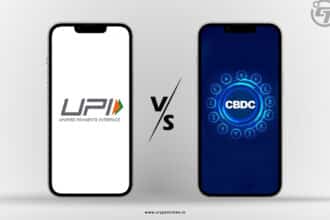The popularity of cryptocurrency has made blockchain technology a technological innovation in the past few years. In this technical realm, Blocks are the most fundamental element of a blockchain.
As the term suggests, Blockchain is a database of chronologically ordered blocks that have all the data and information. Blocks are the essential components that make a blockchain whole. It bundles all the data with unique identifications and makes it easy to access encrypted data.
In this article, we will explore the Block in blockchain. We will also see the structure of a block and how transactions are stored on the blockchain via blocks. So let’s get started.
What is a Block in Blockchain?
Block is a fundamental component of blockchain where data is stored. Blockchain is a distributed ledger, and it stores information in a sequential order. This information is encrypted and saved in the blocks. All the information and data within the blocks can be seen by anyone who has access to the blockchain network.
These blocks are interconnected with the new block getting assigned with the previous block’s unique identity called ‘Hash’. When a block is filled at a capacity, the block data is permanently stored there and secured with a cryptographic hashing function. This gives it immutability, so the data can not be altered.
In the case of cryptocurrency blockchains, the blocks have data and records of cryptocurrency transactions. A single block could have multiple cryptocurrency transactions, or it could be empty as well. The process of adding and verifying those cryptocurrency transactions depends on the consensus mechanism of the blockchain – for example, Proof-of-work (PoW) and Proof-of-Stake (PoS).
Block Structure in Blockchain
The structure of the block varies depending on the functionality of the blockchain. The general structure of the block consists of two main elements: Header and Body. Both these elements consist of crucial information.
Let’s elaborate on block structure briefly;
Block Header
The header of the block contains technical information such as block height, timestamp, previous block’s hash, MerkleRoot hash, etc. Every block has this same set of attributes with a unique hash. The header distinguishes a block from other blocks, as it is a must to recognize each block separately on the blockchain.
While different blockchains have different block functionalities and features, the following are the most common fields in blocks;
- Block Height: A sequential number for each block that is added to the blockchain network. No block will have the same height number.
- Timestamp: The stamp of Unix time shows when the block was added to the blockchain.
- Previous Block’s Hash: A hash of the previously added block helps in maintaining the sequence.
- Nonce: It’s a number that block miners adjust to compute the puzzle for adding a new block to the blockchain.
- MerkleRoot Hash: The hash of all transactions included in the block.
A block header could also have other attributes such as difficulty, version, transaction counter, etc.
Block Body
The body of the block includes all the data stored in the form of transactions. It could be cryptocurrency transactions or any value that suggests changes to already existing data on the blockchain. Block body attains the most block space, which is filled with transactional data.
How Data is Stored in Blockchain Blocks
The process of storing data in blocks relies on the blockchain drivers, such as miners, node operators, and validators. These are blockchain participants who use specialized hardware devices and high computational power to solve complex mathematical puzzles to produce blocks. This procedure ensures that all the information included in the blog is legitimate.
The process of verifying transactions and producing blocks is a crucial aspect of the blockchain network. It is also important that the information stored on the blockchain is viable.
Let’s understand the process step by step with the example of a Bitcoin transaction;
Step-1: Transactions Creation
At first, the transaction is created by a sender who wishes to transfer value. It generally includes the receiver’s address and Bitcoin amount. Once the sender confirms the transaction and signs it with the private key, it moves to a virtual pool called mempool.
Step-2: Validations And Verification
After the user initially sends the transaction, it is picked by miners for further processing. Miners could choose any of the mempool transactions to include in their new block. Here, miners check the transaction validity by proofing the sender’s signature and wallet balance. Usually, miners prioritize the transactions that pay higher fees.
Step-3: Block Production
Miners are required to use their computational power to meet a certain hash rate for producing and adding the block to the blockchain. All the transactions within the block are secured with a hash and they can not be reverted. Once the block is broadcasted to the blockchain, every node gets updated with a copy of updated block mining information in the blockchain. In this process, miners are incentivized with block rewards in the form of new Bitcoin for block production. The usual block time on the Bitcoin network is 10 minutes.
Different blockchain networks use different block production methods. As Bitcoin utilizes mining and proof-of-work (PoW) consensus for block production, Ethereum uses a completely different approach. Ethereum also initially used the same technique as Bitcoin, but it shifted to Proof-of-stake (PoS) with the Merge Upgrade in September 2022.
Conclusion
Block is the most important component of a blockchain network. The whole infrastructure of the blockchain pivots on blocks and how it stores data. As the crypto industry advances rapidly, the structure of blocks and blockchains is also going through major improvements. The increasing demand for high throughput has put blocks and block space at the center of innovations in the past few years. In the coming time, we will see major upgrades and updates on blockchain blocks.
FAQs
Q1. What block stands for in Blockchain?
Ans: Block is a component of Blockchain where all the encrypted transactions are stored.
Q2. What is a block hash?
Ans: Block hash is a unique identity number that is generated by a mathematical function. Each bock has a Hash through which this data is accessed.







